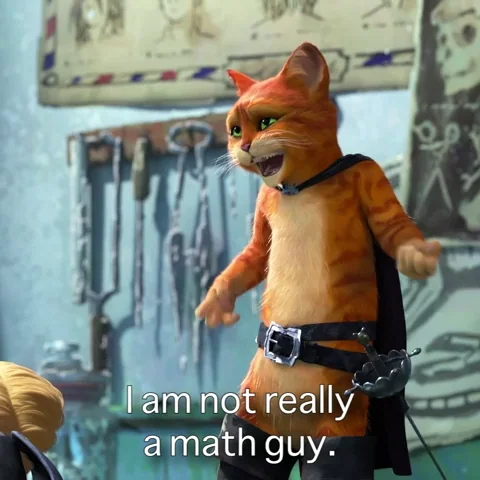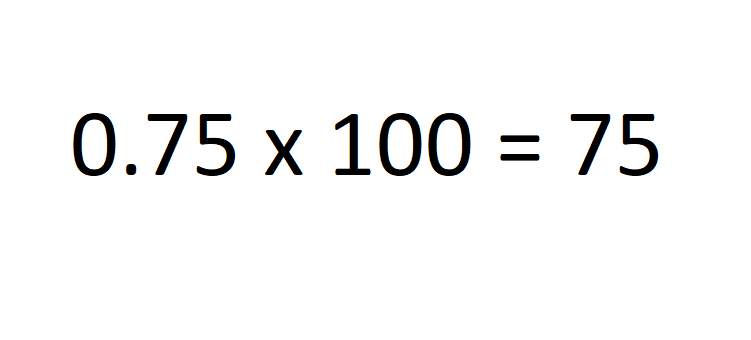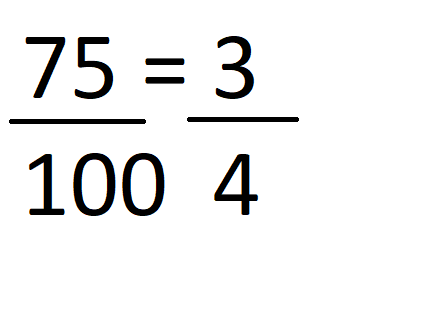
This logo isn't an ad or affiliate link. It's an organization that shares in our mission, and empowered the authors to share their insights in Byte form.
Rumie vets Bytes for compliance with our
Standards.
The organization is responsible for the completeness and reliability of the content.
Learn more
about how Rumie works with partners.

Fraction frustration? Let’s make it percent-tastic!
Back in school, fractions used to drive me crazy — especially when I had to convert them into percentages. No matter how many times I tried, the numbers just wouldn’t click, like a puzzle with missing pieces.
But converting fractions into percentages doesn’t have to feel that way. With a little practice, you’ll be turning fractions into percentages like a pro.
Let’s break it down together, step-by-step!
Step 1: Understand the Basics of Fractions and Percentages
Think of fractions as little slices of a pizza — you know, like 1/2 of a pizza or 3/4 of it. Each fraction tells us how much of the whole pizza we have.
Now, percentages are kind of the same idea, but they always break things down into "out of 100." So instead of saying, "I have half a pizza," with percentages, we’d say, "I have 50% of a pizza."
 Photo by Nabinjan Maharjan on Unsplash
Photo by Nabinjan Maharjan on UnsplashConverting a fraction to a percentage is like re-sizing the pizza slices so that the whole pizza is split into 100 tiny pieces. Once you do that, you can say exactly how many out of 100 you have — like 50 out of 100, or 50%. It's just another way to describe the same part of the whole in a way that's easy to compare.
Convert: Divide the Top Number by the Bottom Number
Alright, let's break down what this means. In a fraction:
the numerator is the number on top
the denominator is the number on the bottom
To start converting a fraction into a percentage, you need to divide these two numbers.

Imagine you have the fraction 3/4. Here, 3 is the numerator (top number), and 4 is the denominator (bottom number).


To get started, take 3 and divide it by 4. This will give you a decimal.
When you do the math, use long division:

To hear an audio description of the equation above, click play on the audio player below:
So, for 3/4, dividing the top by the bottom gives us 0.75. This is the first step in turning the fraction into a percentage!
Multiply the Decimal by 100
Alright, you’ve got your decimal, 0.75. Now let’s turn it into a percentage! To do this, just multiply 0.75 by 100.

Think of it like this: multiplying by 100 is the magic step that converts your decimal into a nice, easy-to-understand percentage. So let’s do the math:

And there you have it! 0.75 is the same as 75%. This means that if you had 3 out of 4 slices of pizza, you’d have 75% of the whole pizza.
Add the Percentage Sign (%)
Alright, you’ve done the hard work, and now you have 75 as your answer. The final step is super easy — just add a percentage sign (%) to show that it’s a percentage. By placing that % symbol, you’re saying, "This number represents a part of 100!"

So, 75 becomes 75%. Now, if someone asks, "What percent of the pizza did you eat if you had 3 out of 4 slices?" you can proudly say, "I ate 75% of the pizza!"
Did you know?
The 50% rule in sales: When something is on sale for 50% off, that means you’re paying half the original price. So, learning percentages can help you spot deals while shopping!
Check out this Byte for more info on calculating sales taxes!
Check Your Work
Let’s make sure you’ve got it right! One quick way to check your answer is by converting the percentage back into a fraction to see if it matches what you started with. For example, you ended up with 75%.

To double-check, convert 75% back into a fraction by putting it over 100:

Then, simplify the fraction. Divide both 75 and 100 by 25, and you get:

And there it is! You’re back to 3/4, just like you started with. This means your conversion is correct!
Quiz
If a pizza is cut into 5 slices and you eat 3 slices, what percentage of the pizza did you eat?
If you ate 3 out of 5 slices, you ate 60% of the pizza. The fraction of the slices you ate is 3/5 — so divide 3 into 5, which makes .60. Then multiply the answer by 10, and add a percentage (%) sign.
Take Action
Now you know the steps to turn fractions into percentages! Give it a try with different fractions — like 1/3, 2/5, or 3/8 — to get even better at it. With a little practice, you’ll be able to convert fractions to percentages in no time. You've got this!

These guides will help you take your fraction and percentage skills even further:
This Byte has been authored by
Ashley Bonilla
Educator
M.A